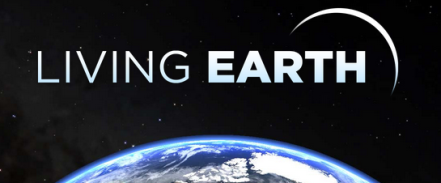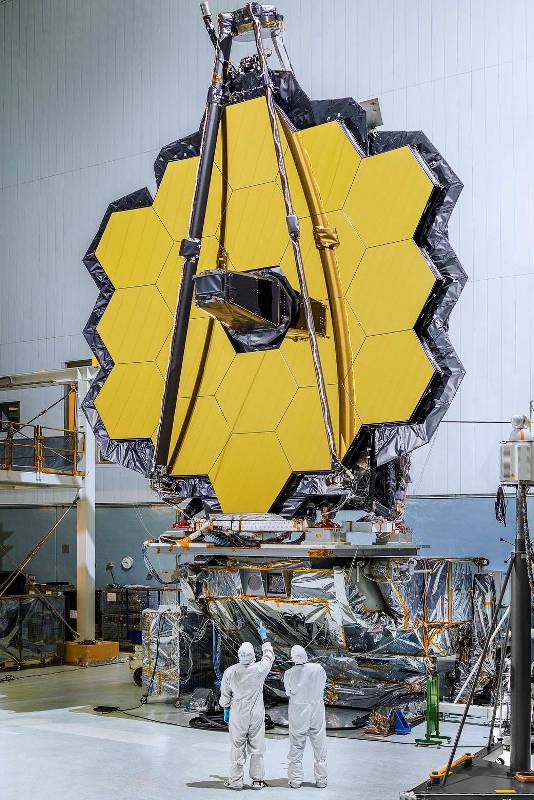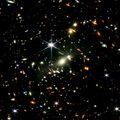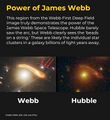Category:Exoplanets: Difference between revisions
Siterunner (talk | contribs) No edit summary |
Siterunner (talk | contribs) No edit summary |
||
| (6 intermediate revisions by the same user not shown) | |||
| Line 1: | Line 1: | ||
[[File:Featured.png]] | |||
<big><big>Origins of Life</big></big> | |||
• [https://www.greenpolicy360.net/w/What_Is_Life%3F What Is Life?] | |||
• [https://www.greenpolicy360.net/w/Category:Origins_of_Life Origins of Life] | |||
<big><big>'''June 2024'''</big></big> | |||
Today's (June 24) GreenPolicy360 'Story of the Day' is an excerpt from the NY Times (link provided w/ article free-to-view/without paywall). The Earth science explored by NYT Magazine speaks of "the tiny little ones" (as GreenPolicy often calls the tiny micro-life forms) that almost always go unseen by human eyes and unappreciated. Yet, as science is now discovering, microorganisms/microbes play an outside role in supporting, and changing, our Living Earth. | |||
As we often do at GreenPolicy, we make [https://www.greenpolicy360.net/w/Category:Earth_System_Science '''"Earth System Science"'''] connections , as in '''[[It's All Related]]''' with ecology as a guide. We zoom into the story in [https://greenpolicy360.net/w/Rainforest_Canopy_Don_Perry '''the Amazon rainforest'''], one of our favorite bioregions. The NY Times Magazine story moves from the rainforest and its canopy with its (https://greenpolicy360.net/w/Rainforest '''amazing stories we were one of first to tell''']. The story connects into the creation of clouds and rainstorm, then across skies and seas, and goes underground, deep into the crust of Planet Earth to reveal a Living Treasure... | |||
"Life finds a way", as [https://www.greenpolicy360.net/index.php?search=crichton&title=Special%3ASearch&profile=advanced&fulltext=1&ns0=1 '''Michael Crichton'''] memorably wrote and [https://www.youtube.com/watch?v=kiVVzxoPTtg '''Jeff Goldblum intoned in a Jurassic movie warning'''] delivered to a Barnum-Bailey developer's theme park team. | |||
So let's go deeper now, this is [https://en.wikipedia.org/wiki/H._G._Wells '''more than an H.G. Wells tale'''] or any Disney-Marvel animation or theme park ride (even [https://greenpolicy360.net/w/File:SpaceshipEarth-Epcotjpeg.jpeg '''Spaceship Earth'''] at Epcot.) | |||
<big><big>'''The Mysterious, Deep-Dwelling Microbes That Sculpt Our Planet'''</big></big> | |||
By Ferris Jabr | |||
Ferris Jabr is a contributing writer at the NY Times magazine and the author of “Becoming Earth: How Our Planet Came to Life." | |||
* https://www.nytimes.com/2024/06/24/magazine/earth-geomicrobiology-microbes.html?unlocked_article_code=1.2E0.Q21i.PVXzWWkDrVFQ&smid=url-share | |||
''In a typical year, the Amazon generates around half of its own rainfall.'' | |||
''The Amazon’s rain ritual challenges the way we typically think about life on Earth. Conventional wisdom holds that life is sub¬ject to its environment. If Earth did not orbit a star of the right size and age, if it were too close or too far from that star, if it did not have a stable atmosphere, liquid water and a magnetic field that deflects harmful cosmic rays, it would be lifeless. Life evolved on Earth be¬cause Earth is suitable for life. Since Darwin, prevailing scientific paradigms have likewise emphasized that the ever-shifting demands of the environment largely dictate how life evolves: Species best able to cope with changes to their particular habitats leave behind the most descendants, whereas those that fail to adapt die out.'' | |||
''Yet this truth has an underappreciated twin: Life changes its environment, too. In the mid-20th century, when ecology established itself as a formal discipline, this fact began to gain wider recognition in Western science. Even so, the focus was on relatively small and local changes: a beaver constructing a dam, for instance, or earthworms churning a patch of soil. The notion that living creatures of all kinds might modify their environments in much more significant ways — that microbes, fungi, plants and animals can change the topography and climate of a continent or even the entire planet — was rarely given serious consideration.'' | |||
''In recent decades, however, the scientific understanding of life’s relationship to the planet has been undergoing a major reformation. Contrary to longstanding maxims, life has been a formidable geological force throughout Earth’s history, often matching or surpassing the power of glaciers, earthquakes and volcanoes. Over the past several billion years, all manner of life forms, from microbes to mammoths, have transformed the continents, ocean and atmosphere, turning a lump of orbiting rock into the world as we’ve known it. Living creatures are not simply products of inexorable evolutionary processes in their particular habitats; they are orchestrators of their environments and participants in their own evolution.'' | |||
''We and other living creatures are more than inhabitants of Earth. We are Earth: an outgrowth of its physical structure and an engine of its global cycles. The evidence for this new paradigm is all around us, although much of it has been discovered only recently and has yet to permeate public consciousness to the same degree as, say, selfish genes or the microbiome.'' | |||
''The history of life on Earth is the history of life’s remaking Earth...'' | |||
(In a mine tunnel now, deep beneath the surface of 'Planet Earth') ... ''Kneeling, I realized that the water was teeming with a stringy white material similar to the skin of a poached egg. Caitlin Casar, a geobiologist, explained that the white fibers were microbes in the genus Thiothrix, which join together in long filaments and store sulfur in their cells, giving them a ghostly hue. Here we were, deep within Earth’s crust — a place where, without human intervention, there would be no light and little oxygen — yet life was literally gushing from rock. This particular ecological hot spot had earned the nickname ThiothrixFalls...'' | |||
<big>''Microbiomes empowering life, living systems, all related life...''</big> | |||
: [https://www.greenpolicy360.net/w/It%27s_All_Related '''Systems Thinking, "It's All Related"'''] | |||
: [https://www.greenpolicy360.net/w/Microbiomes_at_Risk '''In the Worlds of the Microbiomes'''] | |||
[[File:Living Earth.png]] | |||
<big>'''An Unseen World'''</big> | |||
:'''The 'Tiny Little Ones' ''' | |||
GreenPolicy360: As the extraterrestrial search for life extends thru the data returned from Hubble and Webb space-based intergallactic imaging let's ask about non-surface exoplanet life-forms. The reflective multispectrum results of scanning by Hubble/Webb do not capture non-reflective, internal exoplanet results. Think about microbiomes ... and life in forms not captured by Hubble/Webb and scanning surveys of galaxies from state of the art instruments from Planet Earth. | |||
○ | |||
<big>'''Blue-Green Planets in Space?'''</big> | <big>'''Blue-Green Planets in Space?'''</big> | ||
• https://en.wikipedia.org/wiki/Exoplanet | |||
• https://en.wikipedia.org/wiki/NASA_Exoplanet_Archive | |||
• https://en.wikipedia.org/wiki/Extrasolar_Planets_Encyclopaedia | |||
• https://www.sciencedaily.com/news/space_time/extrasolar_planets/ | |||
• http://www.skyandtelescope.com/astronomy-news/exoplanets/ | |||
| Line 21: | Line 93: | ||
'''Say Hello to James Webb (To launch in 2018) | '''Say Hello to James Webb (To launch in 2018) | ||
• http://www.greenpolicy360.net/w/File:Webb_Telescope_construction_completed-Nov2016.jpg | |||
| Line 32: | Line 105: | ||
[[Category:Planetary Science]] | [[Category:Planetary Science]] | ||
Latest revision as of 00:10, 25 June 2024
Origins of Life
June 2024
Today's (June 24) GreenPolicy360 'Story of the Day' is an excerpt from the NY Times (link provided w/ article free-to-view/without paywall). The Earth science explored by NYT Magazine speaks of "the tiny little ones" (as GreenPolicy often calls the tiny micro-life forms) that almost always go unseen by human eyes and unappreciated. Yet, as science is now discovering, microorganisms/microbes play an outside role in supporting, and changing, our Living Earth.
As we often do at GreenPolicy, we make "Earth System Science" connections , as in It's All Related with ecology as a guide. We zoom into the story in the Amazon rainforest, one of our favorite bioregions. The NY Times Magazine story moves from the rainforest and its canopy with its (https://greenpolicy360.net/w/Rainforest amazing stories we were one of first to tell]. The story connects into the creation of clouds and rainstorm, then across skies and seas, and goes underground, deep into the crust of Planet Earth to reveal a Living Treasure...
"Life finds a way", as Michael Crichton memorably wrote and Jeff Goldblum intoned in a Jurassic movie warning delivered to a Barnum-Bailey developer's theme park team.
So let's go deeper now, this is more than an H.G. Wells tale or any Disney-Marvel animation or theme park ride (even Spaceship Earth at Epcot.)
The Mysterious, Deep-Dwelling Microbes That Sculpt Our Planet
By Ferris Jabr
Ferris Jabr is a contributing writer at the NY Times magazine and the author of “Becoming Earth: How Our Planet Came to Life."
In a typical year, the Amazon generates around half of its own rainfall.
The Amazon’s rain ritual challenges the way we typically think about life on Earth. Conventional wisdom holds that life is sub¬ject to its environment. If Earth did not orbit a star of the right size and age, if it were too close or too far from that star, if it did not have a stable atmosphere, liquid water and a magnetic field that deflects harmful cosmic rays, it would be lifeless. Life evolved on Earth be¬cause Earth is suitable for life. Since Darwin, prevailing scientific paradigms have likewise emphasized that the ever-shifting demands of the environment largely dictate how life evolves: Species best able to cope with changes to their particular habitats leave behind the most descendants, whereas those that fail to adapt die out.
Yet this truth has an underappreciated twin: Life changes its environment, too. In the mid-20th century, when ecology established itself as a formal discipline, this fact began to gain wider recognition in Western science. Even so, the focus was on relatively small and local changes: a beaver constructing a dam, for instance, or earthworms churning a patch of soil. The notion that living creatures of all kinds might modify their environments in much more significant ways — that microbes, fungi, plants and animals can change the topography and climate of a continent or even the entire planet — was rarely given serious consideration.
In recent decades, however, the scientific understanding of life’s relationship to the planet has been undergoing a major reformation. Contrary to longstanding maxims, life has been a formidable geological force throughout Earth’s history, often matching or surpassing the power of glaciers, earthquakes and volcanoes. Over the past several billion years, all manner of life forms, from microbes to mammoths, have transformed the continents, ocean and atmosphere, turning a lump of orbiting rock into the world as we’ve known it. Living creatures are not simply products of inexorable evolutionary processes in their particular habitats; they are orchestrators of their environments and participants in their own evolution.
We and other living creatures are more than inhabitants of Earth. We are Earth: an outgrowth of its physical structure and an engine of its global cycles. The evidence for this new paradigm is all around us, although much of it has been discovered only recently and has yet to permeate public consciousness to the same degree as, say, selfish genes or the microbiome.
The history of life on Earth is the history of life’s remaking Earth...
(In a mine tunnel now, deep beneath the surface of 'Planet Earth') ... Kneeling, I realized that the water was teeming with a stringy white material similar to the skin of a poached egg. Caitlin Casar, a geobiologist, explained that the white fibers were microbes in the genus Thiothrix, which join together in long filaments and store sulfur in their cells, giving them a ghostly hue. Here we were, deep within Earth’s crust — a place where, without human intervention, there would be no light and little oxygen — yet life was literally gushing from rock. This particular ecological hot spot had earned the nickname ThiothrixFalls...
Microbiomes empowering life, living systems, all related life...
An Unseen World
- The 'Tiny Little Ones'
GreenPolicy360: As the extraterrestrial search for life extends thru the data returned from Hubble and Webb space-based intergallactic imaging let's ask about non-surface exoplanet life-forms. The reflective multispectrum results of scanning by Hubble/Webb do not capture non-reflective, internal exoplanet results. Think about microbiomes ... and life in forms not captured by Hubble/Webb and scanning surveys of galaxies from state of the art instruments from Planet Earth.
○
Blue-Green Planets in Space?
• https://en.wikipedia.org/wiki/Exoplanet
• https://en.wikipedia.org/wiki/NASA_Exoplanet_Archive
• https://en.wikipedia.org/wiki/Extrasolar_Planets_Encyclopaedia
• https://www.sciencedaily.com/news/space_time/extrasolar_planets/
• http://www.skyandtelescope.com/astronomy-news/exoplanets/
○
Next Up in the Search of the Universe for Knowledge and Life
Say Hello to James Webb (To launch in 2018)
• http://www.greenpolicy360.net/w/File:Webb_Telescope_construction_completed-Nov2016.jpg
○
Pages in category "Exoplanets"
The following 4 pages are in this category, out of 4 total.
Media in category "Exoplanets"
The following 15 files are in this category, out of 15 total.
- 29 Days on the Edge w James Webb.png 527 × 461; 215 KB
- Edwin Hubble announces existence of other galaxies - 1924.jpg 428 × 640; 76 KB
- Hubble - Wikipedia.jpeg 800 × 600; 82 KB
- Hubble STS-125 May 17 EVA.jpg 4,288 × 2,843; 1.44 MB
- James Webb - Unfold the Universe - ESA January 2022.png 640 × 444; 304 KB
- James Webb in alignment - 1.jpg 480 × 572; 84 KB
- James Webb in alignment - 2.jpg 480 × 579; 95 KB
- James Webb Telescope Unveils First Image - 1.png 800 × 761; 282 KB
- James Webb Telescope Unveils First Image - 2.png 800 × 824; 418 KB
- NASA Webb Telescope - Top of Mind.jpg 4,096 × 2,726; 1.98 MB
- NASA Webb Telescope -- Top of Mind.jpg 800 × 532; 86 KB
- Webb - Phantom Galaxy M74.jpg 680 × 389; 76 KB
- Webb 1.jpeg 800 × 800; 74 KB
- Webb Telescope observes Jupiter - Aug 2022.png 768 × 795; 779 KB
- Webb v Hubble.jpg 768 × 839; 150 KB

















